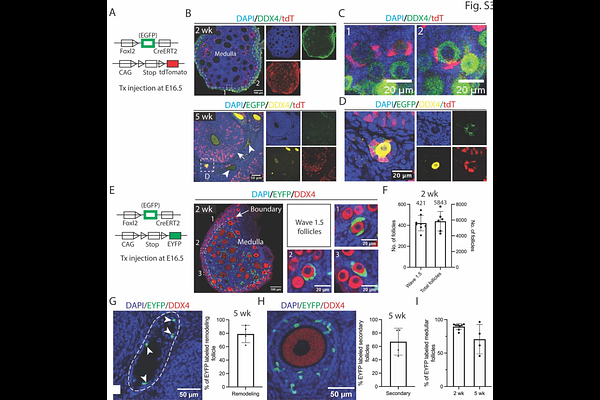Early mouse ovarian follicles develop into a thecal cell network that generates androgens during peri-puberty

Early mouse ovarian follicles develop into a thecal cell network that generates androgens during peri-puberty
Yin, Q.; Spradling, A. C.
AbstractThe earliest mouse fetal ovarian follicles (wave 1) grow rapidly in the ovarian medulla but their function remains unclear. We found these follicles do not produce mature oocytes but follow a distinct developmental program. At preantral stages, their oocytes and then most granulosa cells turn over. Thecal cells expand further, vascularize, express androgen biosynthetic genes, consistent with scRNAseq analyses. In contrast, normal follicles begin to arise during week two from primordial follicles near the medullar-cortical boundary with mosaic granulosa cells. The highest levels of androgen biosynthetic gene expression occur in the thecal network at 5 weeks, a period known as \"peri-puberty,\" and may influence sexually dimorphic brain development and reproductive behavior. Abnormalities of thecal network formation or function in humans may contribute to polycystic ovarian syndrome.